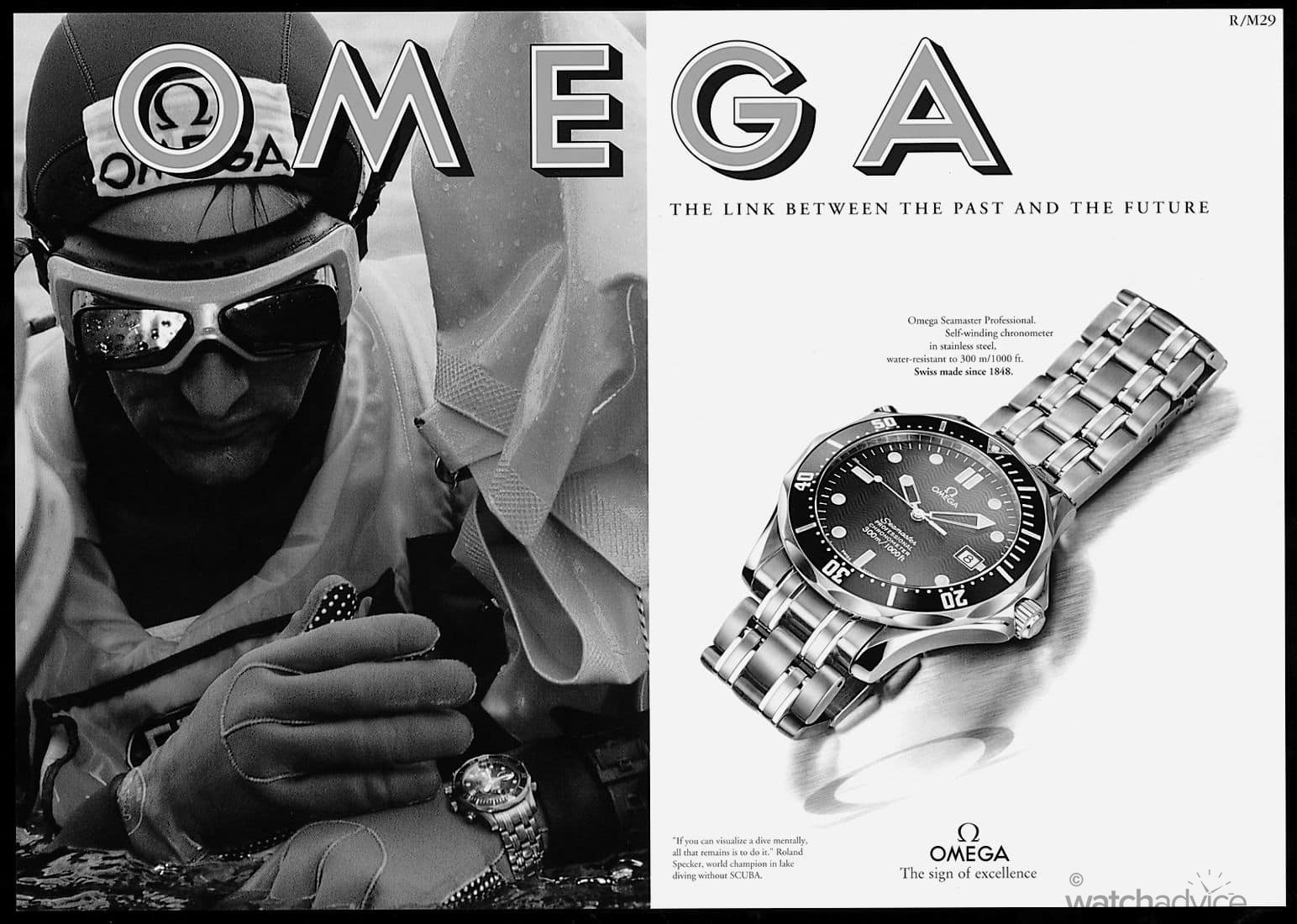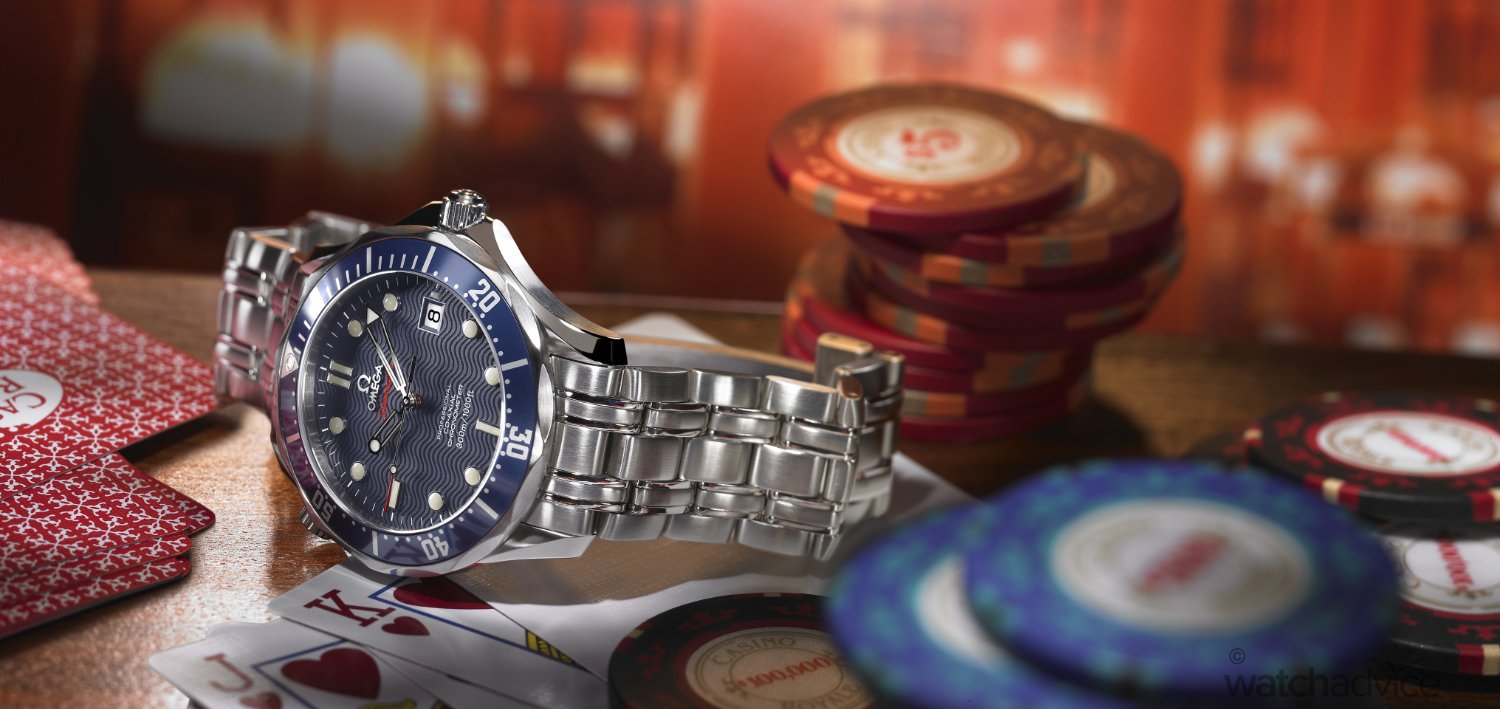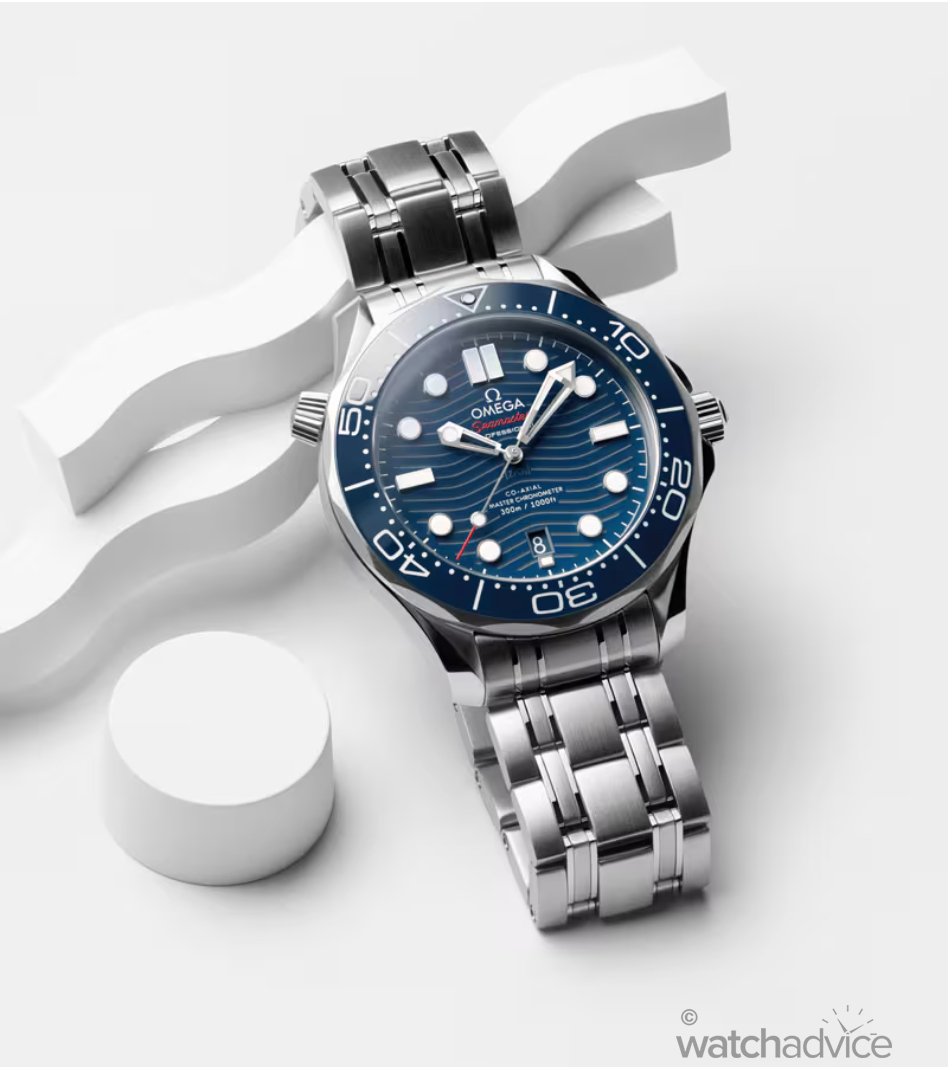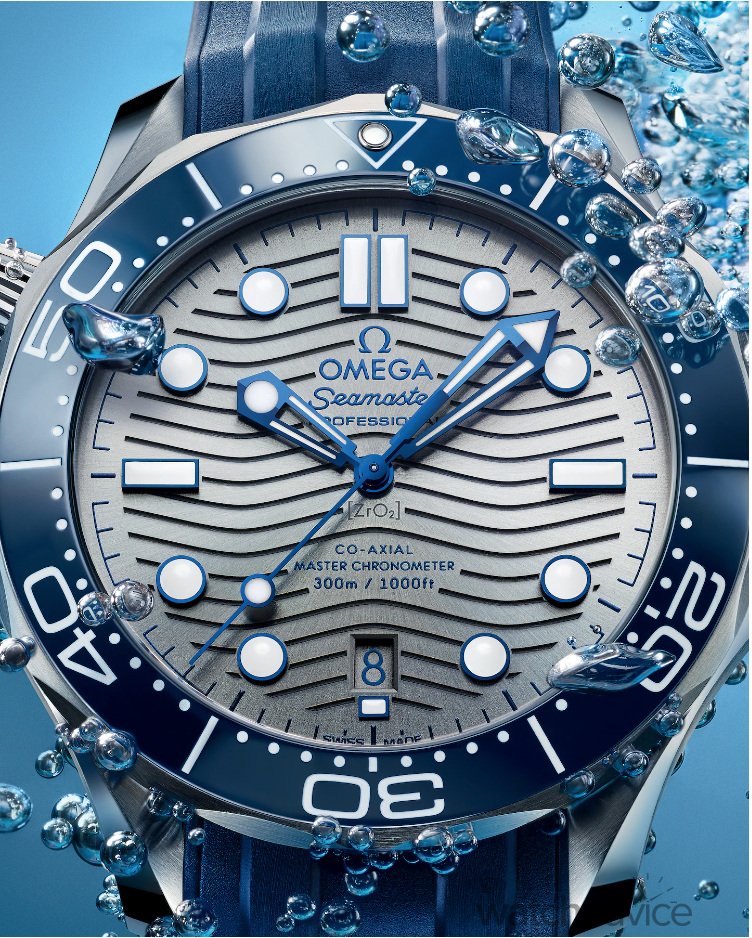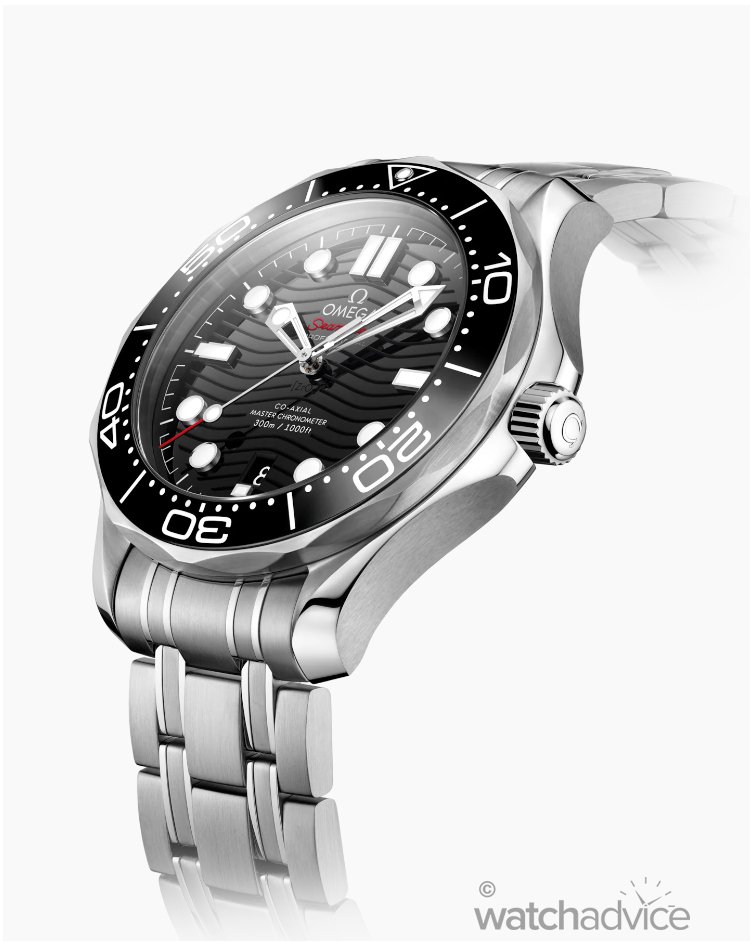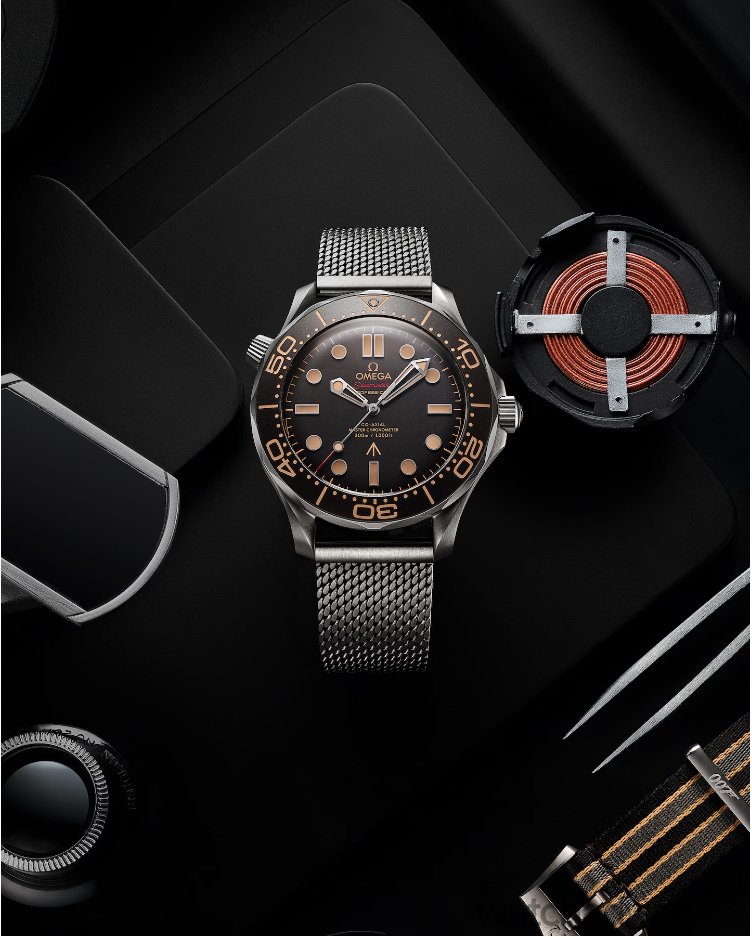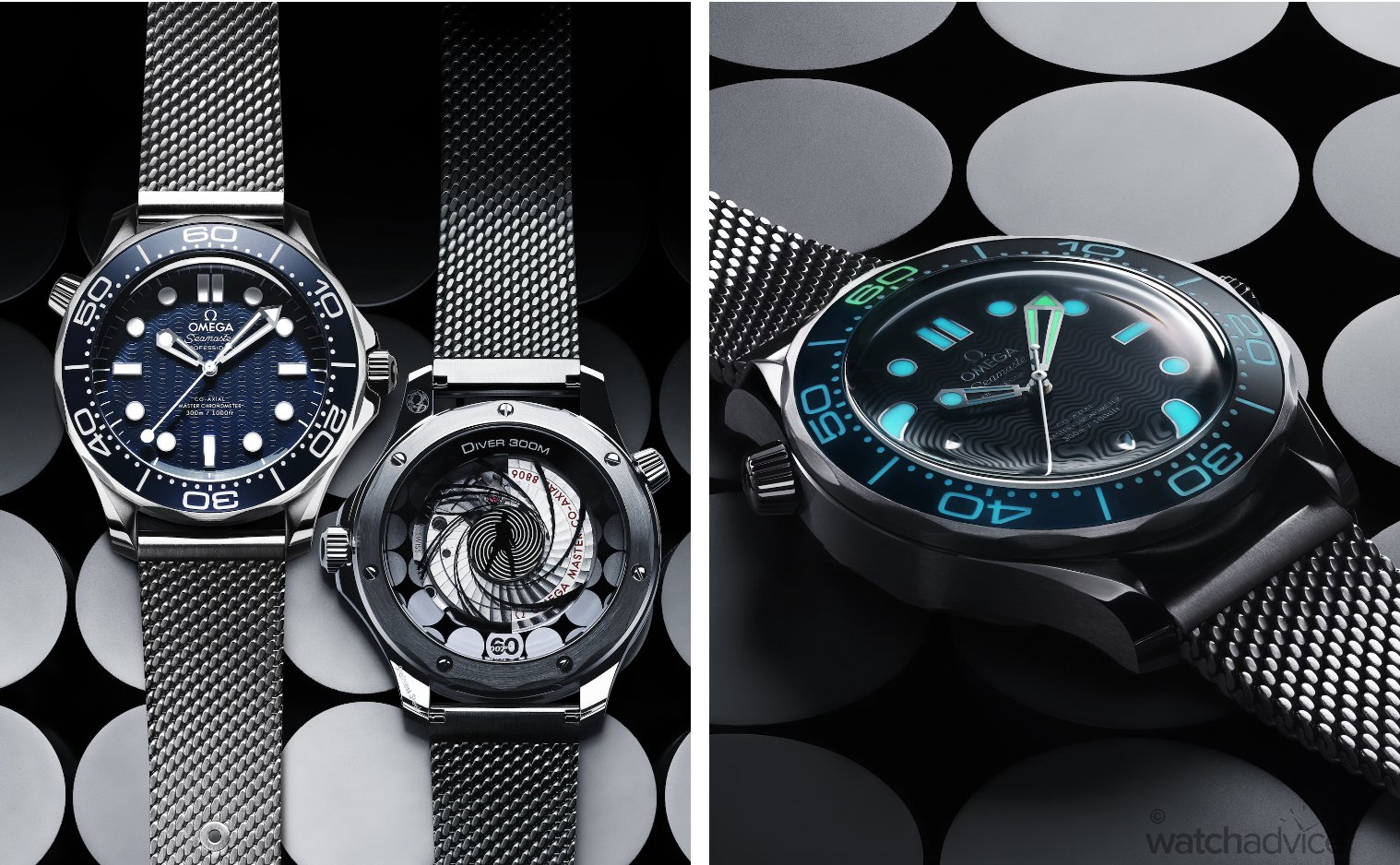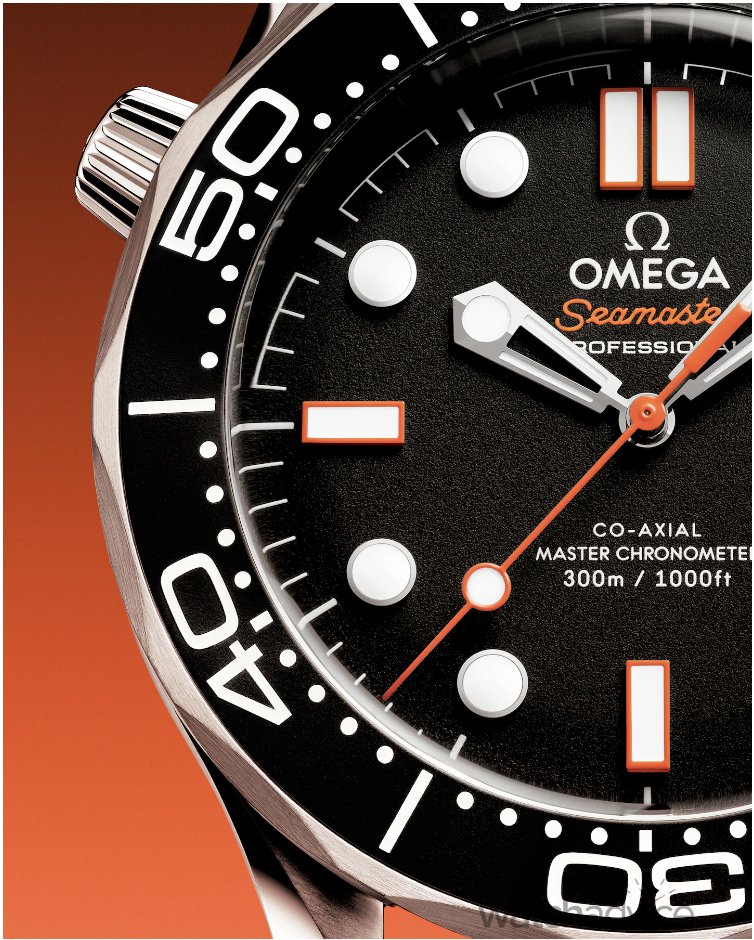Two philosophies, one unmistakable Seamaster identity. This is the Diver 300M as you’ve never seen it. Classic functionality on one side, modern design expression on the other. A story of how Omega reinvented its most recognisable diver for a new era.
Earlier in 2025, WatchAdvice went hands-on with the new black-and-orange Seamaster Diver 300m. This is the fifth colourway of what collectors have been referring to as the new ‘No Date’ Diver since 2024. I take issue with this nickname because these new models are so much more than that.
Many OMEGA fans are left scratching their heads at the higher price of these new releases, because they coexist with the established Diver 300m that, on paper, are higher spec but somehow less expensive. So is this a completely new generation of Diver 300m? Does this replace the 2018collection? Isn’t aluminium a cheaper material? Why is it more expensive than the models with a date? As an owner of the blue dial Diver 300m, I have quite a lot to say about this.
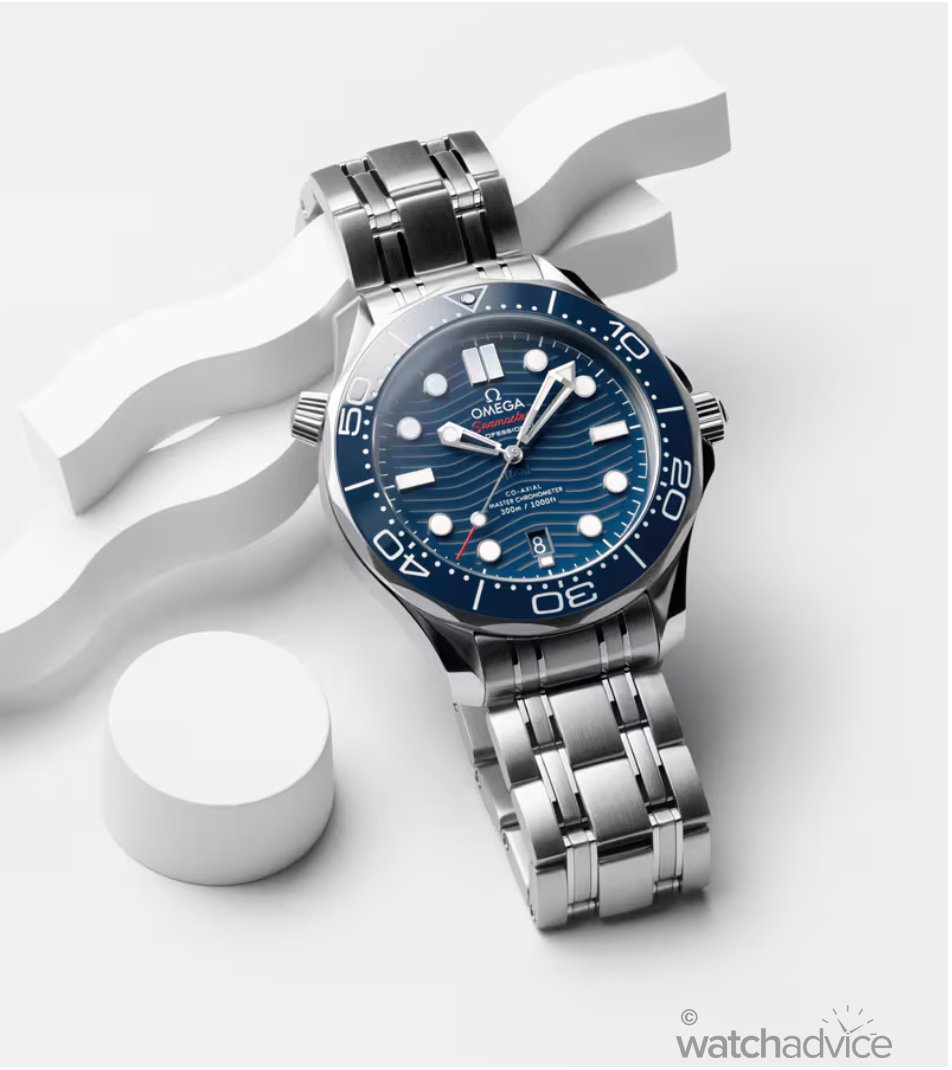
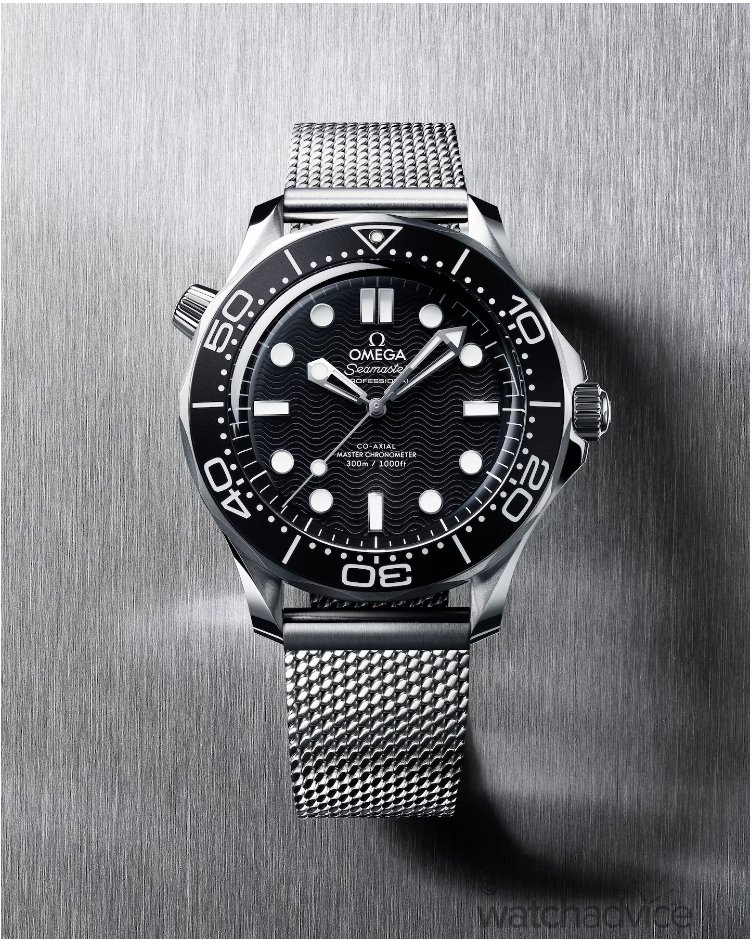
We will explore these questions and the Diver 300m range as it exists in 2025. But first, a bit of history for context when it comes to materials and design cues. For the purposes of this article, we will leave out any mention of the Diver 300m Chronograph line and primarily focus on the core 42mm stainless steel models. This isn’t just a comparison of specs, it’s a reflection on how OMEGA’s most recognisable design has evolved in personality, purpose, and price.
Brief History of The 1990s Divers
Introduced to the world as the Seamaster Professional 300m, offered in both quartz and COSC-certified automatic, this was a daring design for the time and is still relevant and charming today. What’s important to remember is that it wasn’t a derivative of any previous Seamaster; it was an entirely new dive watch concept. And it wasn’t just a tool, it was a sculpture.
The scalloped bezel, flowing case lines, twisted lugs, and the eye-catching, asymmetric manually operated helium escape valve all felt like it was inspired by H2O itself. Even the fluid bracelet resembles a waterfall, but it wasn’t just pretty—it had solid end links and a milled folding diver’s extension clasp that put its closest rivals to shame. They were also gracefully slender for a watch with 300m of water resistance. As clichéd as it sounds, the design really blends beauty with function.
Even back in the 1990s, there was a plethora of options: titanium cases, steel bezel inserts, two-tone, and a cult favourite ‘big-triangle’ dial with sword hands, often paired with a different bracelet.
The most famous features are the James Bond skeleton hands, the iconic matte blue wave dial, and an anodized aluminium bezel insert. This look was worn throughout Pierce Brosnan’s full tenure as Bond, starting 30 years ago with GoldenEye (1995). Daniel Craig wore the 2nd Generation version of this watch in the second and third acts of his debut film, Casino Royale (2006), before switching to other Seamaster designs for his subsequent films as Bond.
At first glance, the 2nd Generation Seamaster is almost indistinguishable from the 1st. It retains the same 41mm case, bezel, bracelet, slightly cambered crystal, and tight-wave pattern. Beneath the glass, the printed indexes were replaced with rhodium-plated markers, and the Seamaster signature was highlighted in red. Notably, this was the first 300m to feature the George Daniels Co-Axial Escapement, a watchmaking innovation designed to reduce friction and improve long-term movement accuracy.
The 3rd Generation, introduced in 2012, saw the quartz option retired and the iconic waves removed from the dial, replaced by a glossy lacquer finish. It also introduced a basic ceramic bezel with a printed grey diving scale. While improved, it still relied on the Calibre 2500 of its predecessor and lacked some of the newer OMEGA technologies, such as Liquidmetal® and the anti-magnetic Si14 silicon hairspring.
2018 – The 4th Generation “Brosnan”
As this design is a direct continuation of the original Seamaster Professional 300m worn in GoldenEye, it feels only right to refer to it as the “Brosnan” from here on out.
On the 25th anniversary of the Diver 300m, OMEGA delivered a significant upgrade with the 4th Generation model—now powered by the METAS-certified Calibre 8800, proudly visible through a sapphire case back. This movement ensured superior anti-magnetism, chronometric performance, and durability, bringing the classic design fully into the modern era. The 2018 release represented the biggest overhaul of the design to date, more than all the previous ones combined.
The case grew to 42mm and was re-profiled, with the helium valve aligned at 10 o’clock. The hands were longer, broader, and tapered, improving legibility underwater. A cambered sapphire crystal with anti-reflective coating on both sides added modern clarity. The ceramic bezel featured white enamel, and the laser-engraved wave dial returned with a wide-line pattern, with the date at 6 o’clock for symmetry. The dial’s spacing is precise, with no jarring overlaps.
The classic bracelet felt much more in line with the times upon release. The rounded fluidity of the old links was now more squared off and architectural. A much-requested micro-adjust was provided in addition to the signature folding diver’s extension clasp.
All these refinements and upgrades resolved every nitpick I had with the previous generations. It went from being a design I respected to one that I needed—and boy, do I wear it. On paper, it has everything a modern luxury watch consumer could want for their everyday piece: a heritage-rich aesthetic, a scratch-resistant ceramic bezel for timing, a highly adjustable steel bracelet, a date display, and a look that transitions effortlessly from casual to formal settings. A dress watch with professional specifications.
It was OMEGA at its confident best: offering ceramic, enamel, and a METAS-certified movement at a price the Rolex Submariner of the time couldn’t touch. You could feel how much care went into refining OMEGA’s best-selling design. This was a true statement of intent and a direct shot at Rolex’s dominance.
Initially offered in blue, black, and chrome-blue, this generation introduced classics like ‘Seaweed Green’ and ‘Polar White,’ along with special editions, as is the OMEGA way. Some special editions feature matte, no-date dials with raised waves.
All Brosnan dials feature a hallmark stating the material, positioned just underneath the hands. Nearly all are marked ‘ZrO2’, indicating zirconium dioxide ceramic. If you happen to own one marked ‘Ti’—respect. If you have one marked ‘Pt950’… please hit us up for a photoshoot. And if you happen to know the one reference that’s an exception to this rule, leave a comment. I’ll be waiting.
OMEGA also reintroduced integrated rubber straps to the collection. The largely forgotten integrated straps of the 1990s should remain as such—let’s just say they didn’t age well. These modern vulcanised straps feature a titanium strip within the OMEGA keeper, which adds durability and allows the tail to slide through smoothly. Going that extra mile, the pin buckles are styled to match the twisted lugs of the case.
Quick Summary of Gen. 4 Brosnan Diver 300m:
- Cambered Sapphire Crystal with AR coating on both sides
- Ceramic dial with wide, laser-engraved waves, 6 o’clock date window, hallmarked
- Ceramic bezel with white enamel dive scale
- Upgraded classic bracelet with a folding diver’s extension and micro-adjustment
- Reintroduced rubber straps with pin buckles matching the twisted-lug aesthetic
- Current RRP AU$10,525 (steel on steel)
The 007 Editions (2019–2022)
Having explored the standard 4th generation ‘Brosnan’ Diver, OMEGA’s 007 editions from 2019-2022 took the design in a new, whimsical direction.
For No Time To Die (2019), Daniel Craig had input on his last Seamaster, insisting on titanium to reduce weight. The watch and Bond’s wardrobe were designed to look aged yet beautiful, like his Aston Martin V8 Vantage.
The ‘NTTD’ Seamaster marked a serious departure from the Diver 300m formula of the past 26 years. It combined a vintage-inspired domed sapphire crystal and beige lume with an extremely modern titanium Milanese mesh bracelet. The date window was replaced with the Broad Arrow insignia, a historic British MOD symbol used to mark military-issued equipment. It is still seen today on some Australian Defence Force property and serves as a nod to OMEGA’s real service watches once supplied to British forces. This symbol is present on the titanium case back, accompanied by military designation codes.
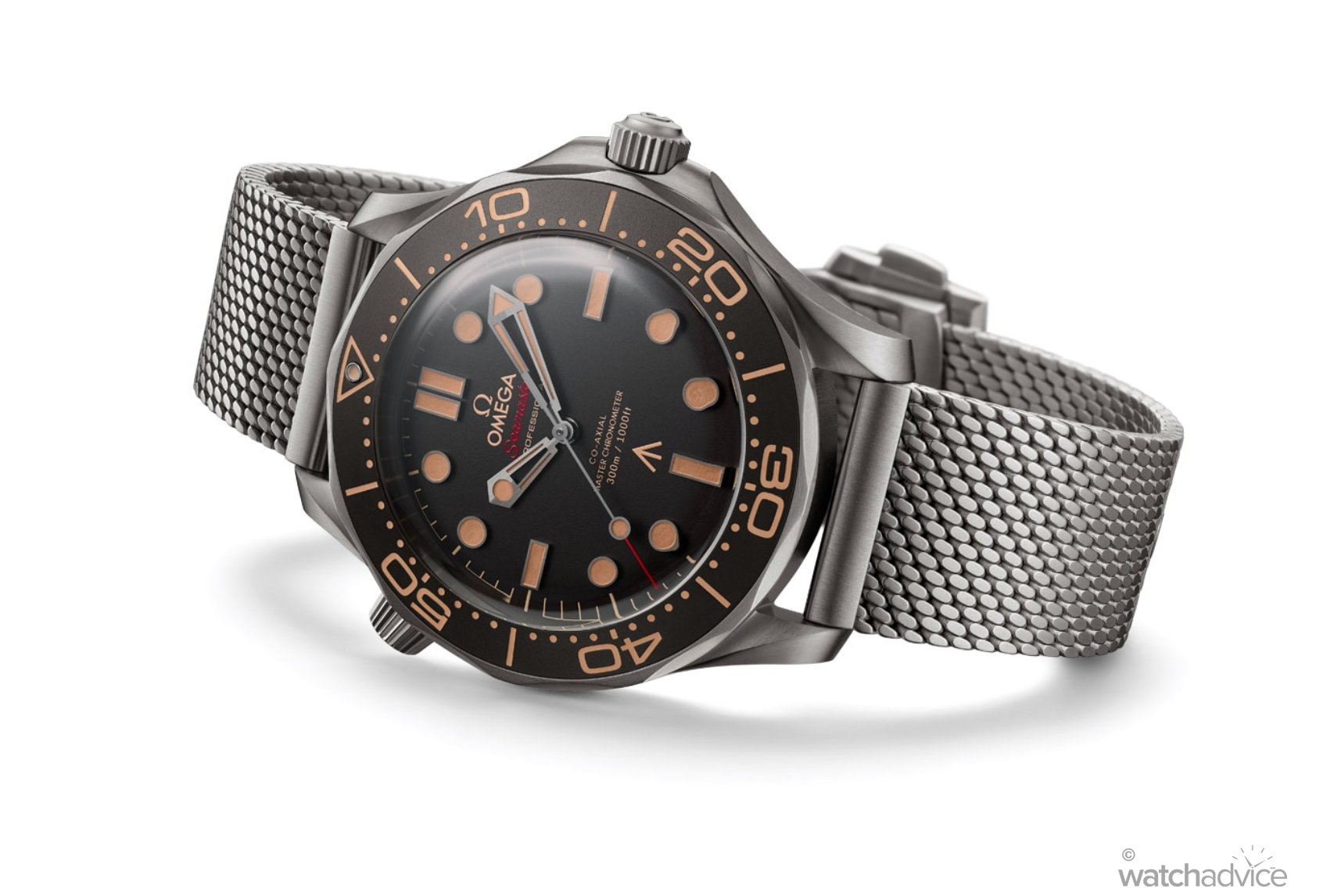
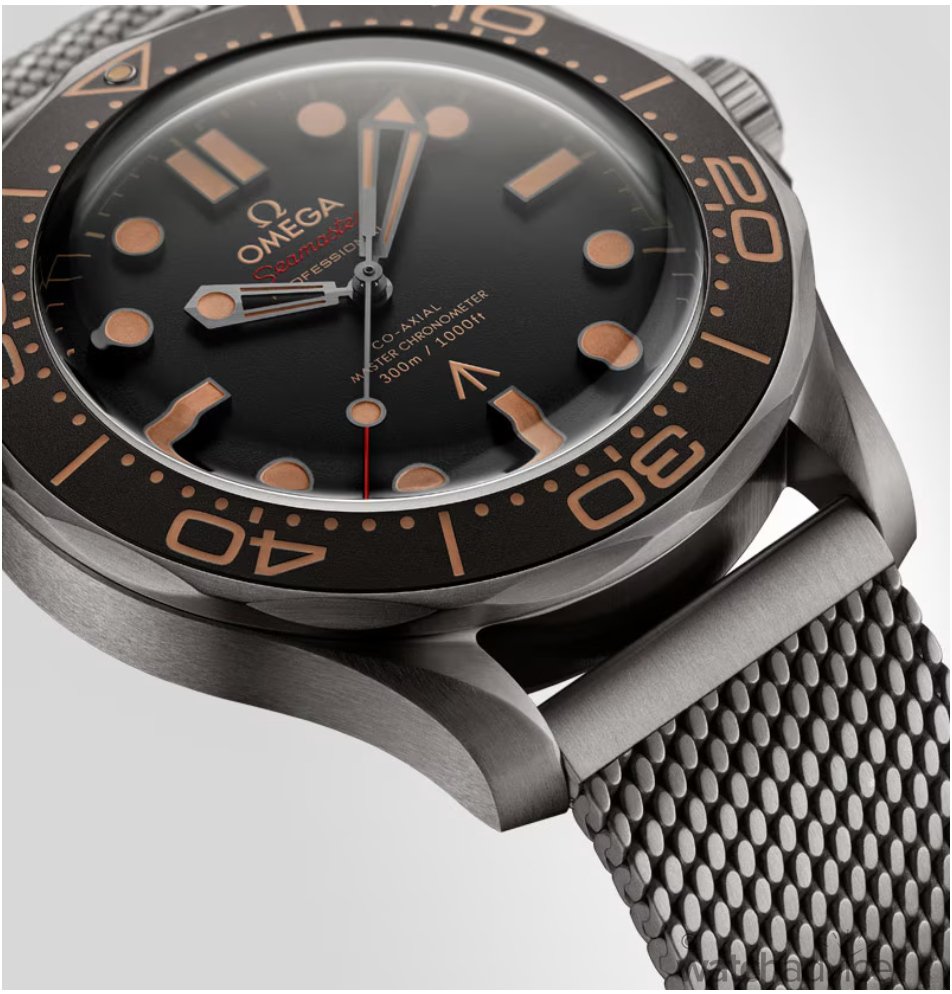
Perhaps most significantly, it was the OMEGA debut of Oxalic Anodized Aluminium on OMEGA watches. Here it was used for the bezel and the dial in a matte tropical brown, without the waves. OMEGA claims the new aluminium bezels are twice as scratch-resistant and twice as fade-resistant as those of yesteryear. This technology has now become the norm on aluminium bezels for the OMEGA range since 2019, including the Speedmaster Moonwatch, Speedmaster Chronoscope, and the Seamaster 300, just to name a few. This was also the first Diver 300m bezel to be fully lumed across the whole rotating bezel scale.
In 2019, seven years after the Tudor Black Bay inspired the industry-wide vintage dive watch trend, this 007 Edition looked incredibly fresh. The brown tones of the dial and lume exaggerated the warm grey hue of the brushed Grade 2 Titanium, combined with that Milanese bracelet, the NTTD was a showstopper. The casual watch observer had no idea it was even “vintage” themed. While the storytelling leaned heavily into OMEGA (and Bond’s) military history, this wasn’t an enlarged remake of a mid-century watch. Instead, it posed the question “What if the Diver 300m existed in the 1960s?”
Current RRP: AU$17,825 (titanium on titanium)
In late 2022, to mark the 60th anniversary of James Bond, Omega released a stainless steel special edition with a blue oxalic anodised aluminium dial and tight-wave pattern, inspired by the Brosnan era. It included the Spectre lollipop seconds hand, No Time To Die’s domed crystal, and Milanese bracelet—a fan favorite.
But it wouldn’t be a Bond watch without a secret function, so this time Bond gets the Silver Snoopy treatment with an animated caseback, depicting the cinematic gun barrel sequence on repeat every 10 seconds. The triangle at 12 o’clock on the bezel was replaced by the number ’60’—a nod to the anniversary.
This watch could be seen as a stainless steel follow-up to the NTTD piece. For a while, the Diver 300m collection had two clear lines: the standard ‘Brosnan’ models and a pair of more expensive, explicitly 007-themed special editions.
Current RRP: AU$14,800 (steel on steel)
2024–2025 The ‘Daniel Craig / No-Date’— a More Expensive Downgrade?
This is where things get interesting. Teased on the wrist of Mr. Daniel Craig at the Paris 2024 Olympics, many OMEGA fans noticed the Milanese bracelet, black tight-wave dial, and domed crystal—eagerly expecting another 007 special edition. Social media and forums quickly began referring to it as the “Daniel Craig” for shorthand as anticipation grew.
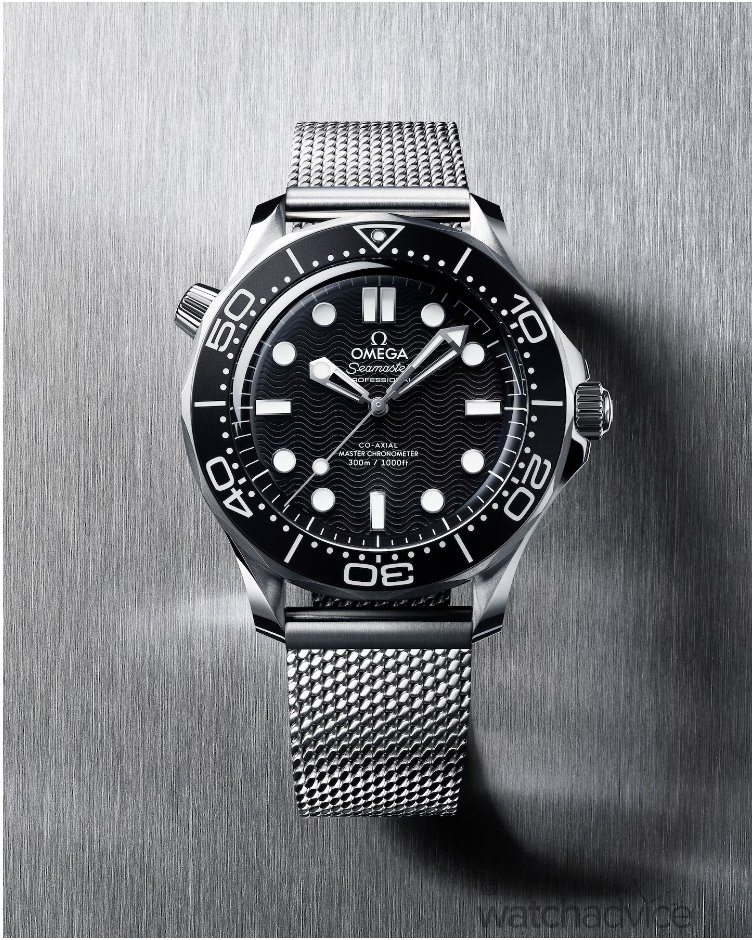

What they received was unexpected: a new, regular-production Diver 300m design, also in 42mm, but not a new generation, not a special edition. Hold on—a different Diver 300m design that coexists with the mainstay model, with a new dial, bezel, and bracelet design? Why does this sound so familiar?
This ‘Daniel Craig’ diver distilled the unique elements of the 2019–2022 007 Editions and ‘de-specialised’ them. Gone were the spy gimmicks, military callbacks, and anniversary nods. The result was a sober, modern take on the Diver 300m—free to show off its design without historical context weighing it down. Unfortunately, the lack of limited-edition status and the lack of an official name from OMEGA gave rise to a new nickname: the frustratingly uninspired, Rolex-adjacent ‘No Date’.
The domed crystal is the key design differentiator of what I’ll continue to call the ‘Daniel Craig’ diver. It only features anti-reflective coating on the underside—meaning that while it reflects more light externally, far more light reaches the dial. Here, the use of matte aluminium makes sense; it provides warmth and contrast across both dial and bezel, where glossy ceramic would not. The omission of the date window isn’t a concession to purists but a deliberate design choice. Combined with such a dome, a date aperture at 6 o’clock would be distorted like a funhouse mirror. As it was with the 007 Editions, inside sits the Calibre 8806, essentially the 8800 pared back to match the watch’s design intent—a movement without a date.
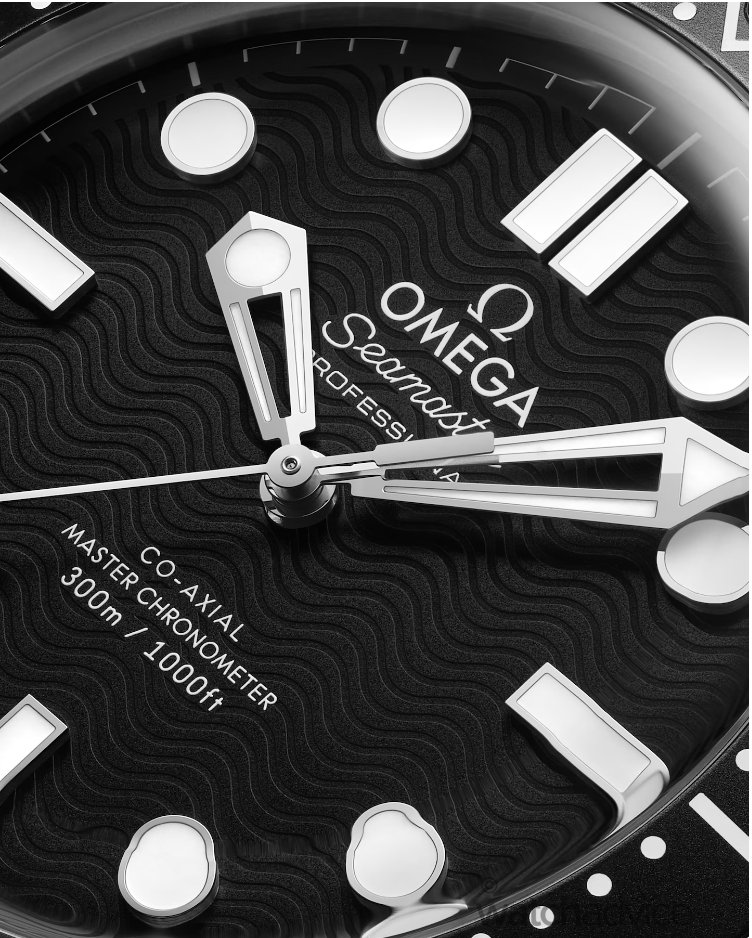
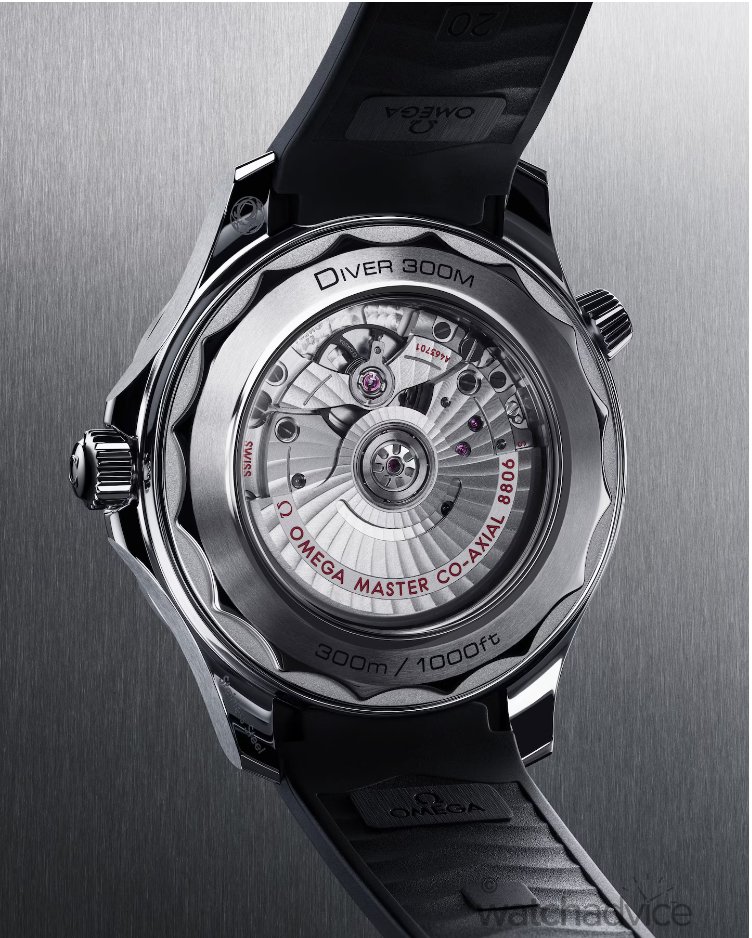
The result of these alterations is a dial that’s more vivid than ever. The hands and indexes take on a whole new light when viewed outdoors, whether the tight-wave pattern is present or not. Something else that’s missing is a dial hallmark—unlike its Brosnan brothers.
Just calling the new Diver 300m “No-Date” is insufficient because a number of Brosnan divers are also dateless, such as the Nekton Edition. Calling them “Aluminium” doesn’t quite fit either, since OMEGA also released it alongside an extreme monochromatic variant with a vertically brushed steel PVD dial and Grade 5 titanium bezel insert. And it’s worth focusing on this version for a moment, because it truly shows the potential of the Daniel Craig design.
The curved crystal bends the vertical brushing around the periphery, creating the illusion of a dial that’s almost liquified. Collectors have already dubbed it the “Silver Surfer”—a fitting nickname for a watch that plays with light and motion so effectively. The design language has already expanded into new variations, each exploring a different personality of the Daniel Craig template. The black and-orange model injects a sportier, almost Planet Ocean–like energy into the mix, while the green titanium-and-bronze-gold pushes the material experimentation even further.
Now, does anyone look at the Silver Surfer and think “vintage”? This line uses vintage cues for its own purposes—a deliberate break from the established formula. The Diver 300m has arguably always been a design watch rather than a pure tool watch. Calling these “vintage-inspired” undersells them; “retro-modern” is a far better description.
I think the initial ‘Daniel Craig’ nickname fits perfectly, as it immediately highlights the fundamental design shift from the Brosnan-era divers while neatly coinciding with Craig’s own liberation from the Bond persona and growth as an artist.
Almost forgot—these models are also offered on rubber straps, this time with a more luxurious folding deployant clasp for added comfort, convenience, and elegance. More on these in a moment. Matte surfaces always lend themselves better to NATO straps than glossy ones, so if you’re one of those freaks with a drawer full of 20mm nylons, you know what to do.
Quick Summary of Daniel Craig / No-Date Diver 300m:
- Domed sapphire crystal with AR coating underneath
- Aluminium dial with tight-wave pattern or no pattern, no date, no hallmark
- Aluminium bezel with fully luminescent diving scale
- Milanese Mesh bracelet, two-piece design with adjustable sizing holes
- Rubber straps with a folding deployant clasp
- Current RRP AU$11,550 (steel on steel)
Now with the “Bond Tax” removed, Daniel Craig inevitably drew comparisons to the standard Brosnan Diver 300m, since it omits the date complication and ceramic-enamel bezel insert. OMEGA is charging more for what, at first glance, appears to be less. But beneath the surface, the value lies not in specification sheets, but in the tactile and optical experience—a deliberate shift from technical luxury to emotional design.
Material Philosophy: Ceramic vs. Aluminium
ZrO2 Ceramic is, by every metric, one of the toughest materials. Sitting at 8.5 on the Mohs scale, just behind sapphire, it will not fade or corrode, and it’s nearly impossible to scratch. It’s ideal for dive watches and built for permanence. Yet, that same flawlessness can feel a little clinical; its perfection leaves no room for warmth, patina, or the passage of time.
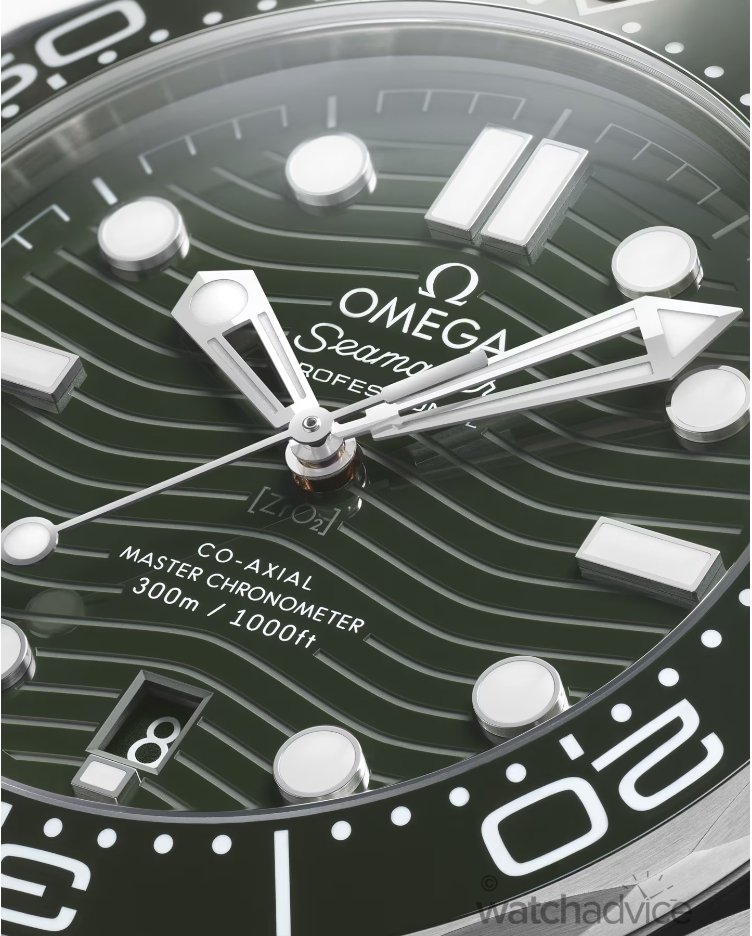
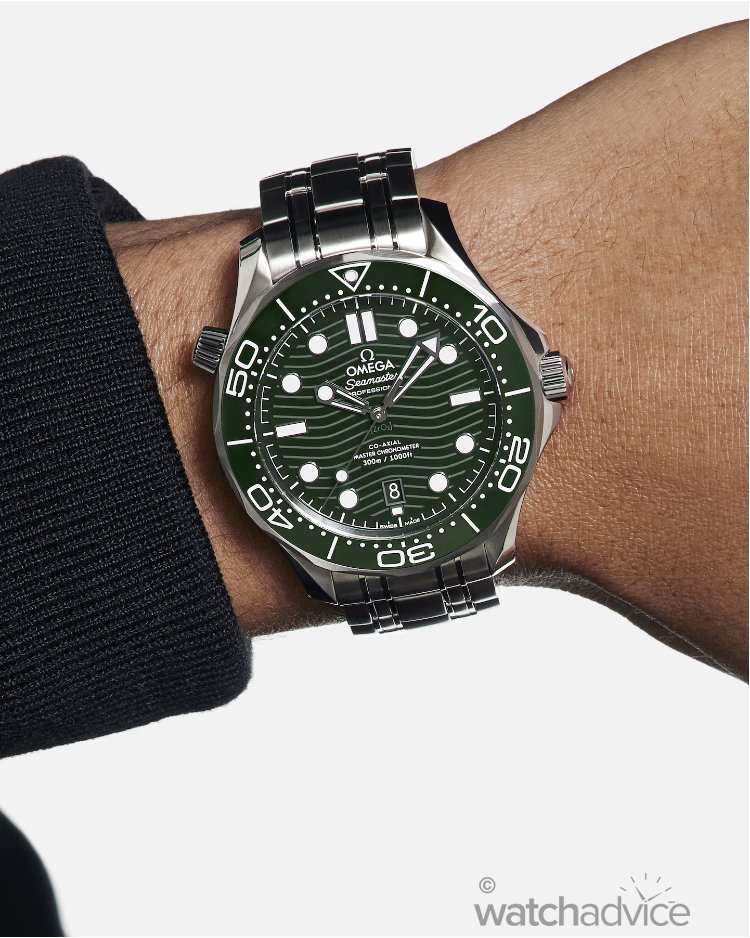
Aluminium, on the other hand, deserves a deeper look, especially now that OMEGA has revived it through oxalic anodising. While both standard and oxalic anodising transform aluminium into a tougher, more resilient surface, the difference lies in refinement. Conventional anodising, which uses sulphuric acid, creates a porous oxide layer that can be dyed into vivid hues—perfect for colourful bezels and high volumes. Oxalic anodising, by contrast, produces a denser, harder oxide using oxalic acid. The result is superior wear resistance and a naturally warm, metallic tone. It’s less porous, more UV-stable, and visually subtler, trading saturation for longevity and lustre.
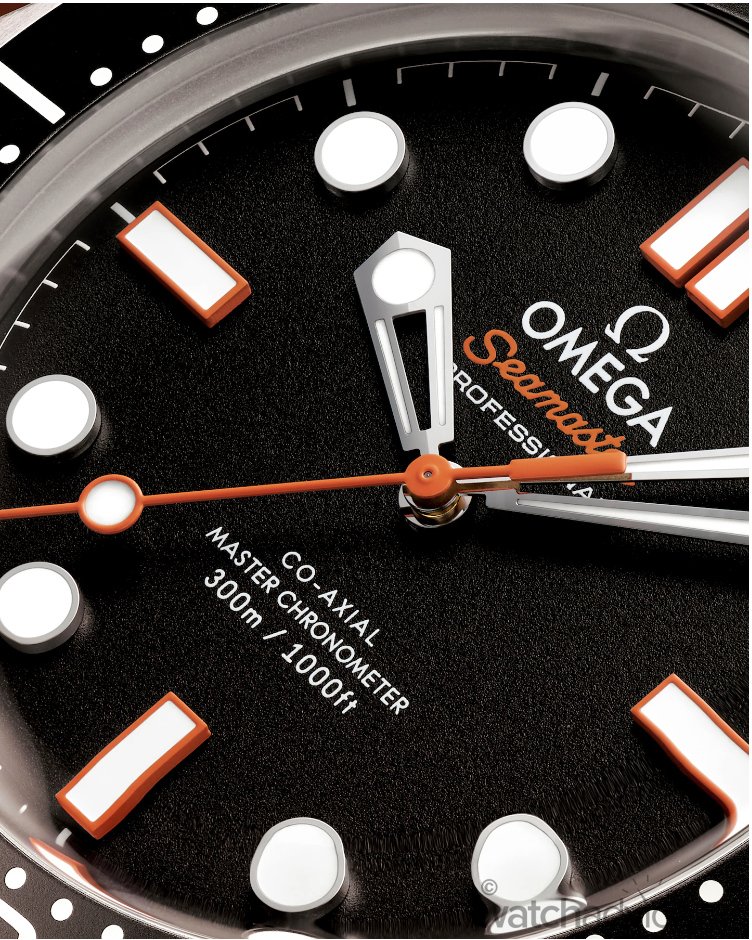
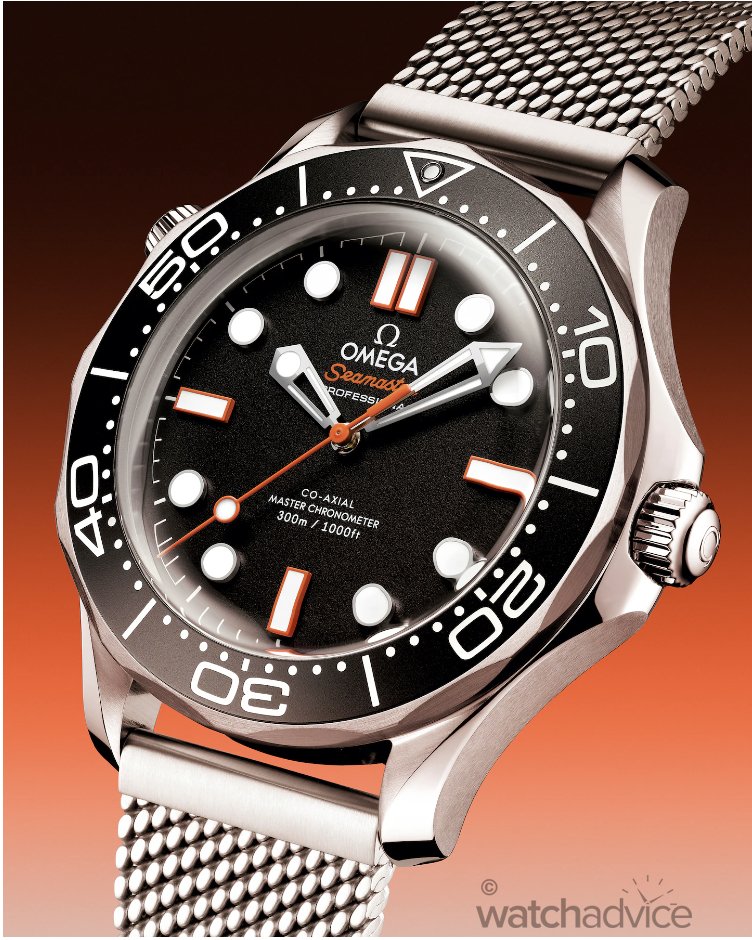
In a way, anodised aluminium is symbolic of the enduring appeal of mechanical watches in a digital world. These anachronistic machines aren’t designed to be replaced or updated—they endure. It can scratch. It will scratch. To choose aluminium over ceramic is to embrace imperfection, to reject the sterile modern obsession with flawlessness. Beauty is eternal; functionality, inevitably, becomes obsolete.
With those material philosophies in mind, the next logical question is how these two divers actually perform—not just on paper, but on the wrist.
Impressions
It should be noted that all of the rubber straps and bracelets are cross-compatible between the Brosnan and Daniel Craig models. Unfortunately, the NTTD is the exception, owing to its slightly thinner case—meaning the titanium mesh bracelet or NATO strap are your only options.
When it comes to out-of-the-box functionality, the Brosnan Seamaster remains the better watch for actual diving. The ceramic bezel inspires confidence when you’re rocking on a dive boat, and the classic bracelet—with its ratcheting micro-adjust and folding diver’s extension—offers up to 33mm of on-the-fly adjustment. It has a lower profile, is more solid, and gives the reassuring impression that it can take a beating. The standard pin-buckle rubber straps are also the simplest and most secure for underwater use.
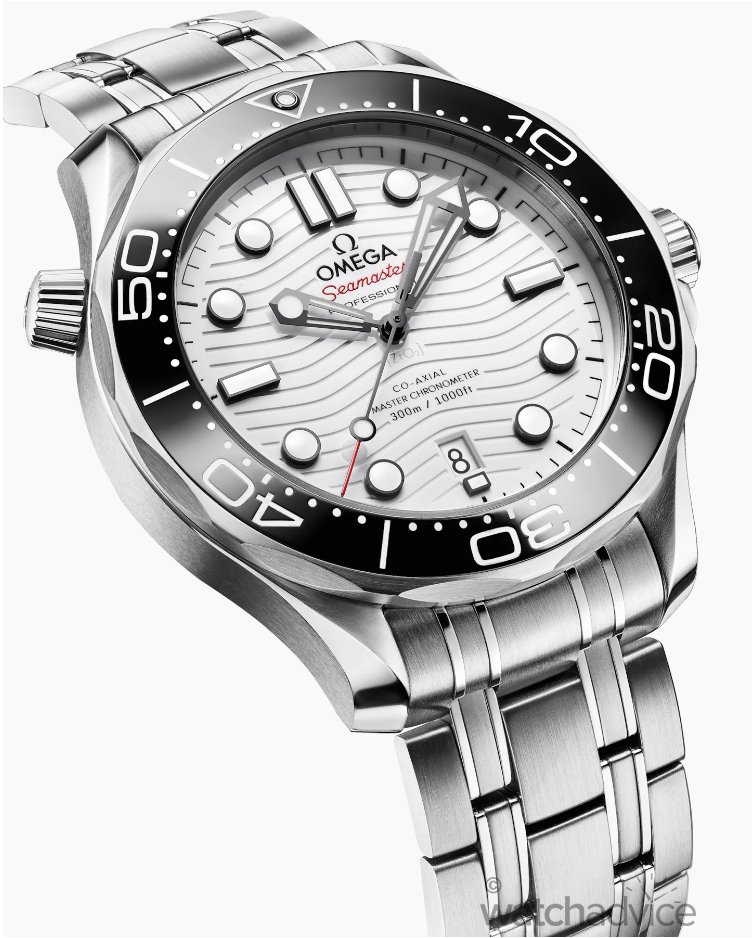

By contrast, the Daniel Craig diver mostly prioritises design over utility. The mesh bracelet and rubber strap share a refined deployant clasp, but without on-the-fly adjustment or clearance for wetsuits, they’re less suited to actual diving. The excess strap length tucks beneath the wrist, adding comfort and elegance on land but less practicality at sea. What is an advantage is having full spectrum lume around the bezel; nothing gets in the way of reading that.
Anti-reflective coating is a frequent point of debate among collectors. As noted earlier, the Daniel Craig’s domed sapphire only has AR coating beneath the crystal—a deliberate design choice. In contrast, the cambered crystal on the Brosnan diver is AR-coated on both sides. This does a great job of reducing glare, but the coating can be scratched, leaving streaky blemishes on the glass. Personally, I don’t mind—you really only notice it when light hits the crystal at the right angle. However, some collectors are more critical, going so far as to argue that it undermines the very purpose of having scratch-resistant sapphire in the first place. On the domed crystal of the Daniel Craig diver, you won’t see a thing, that is, unless you actually cut it.
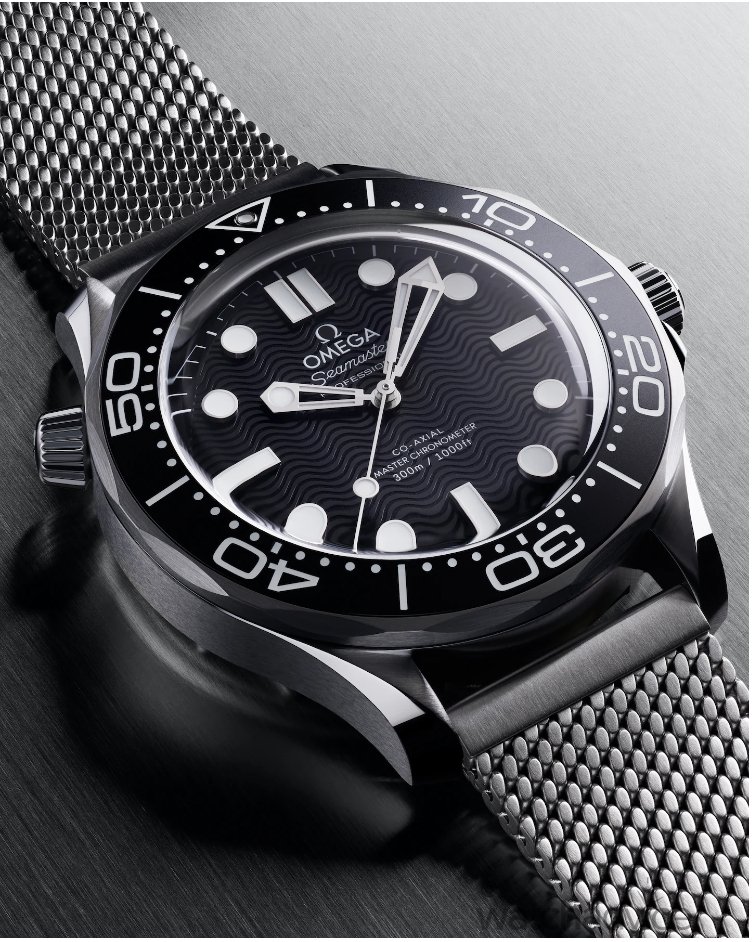
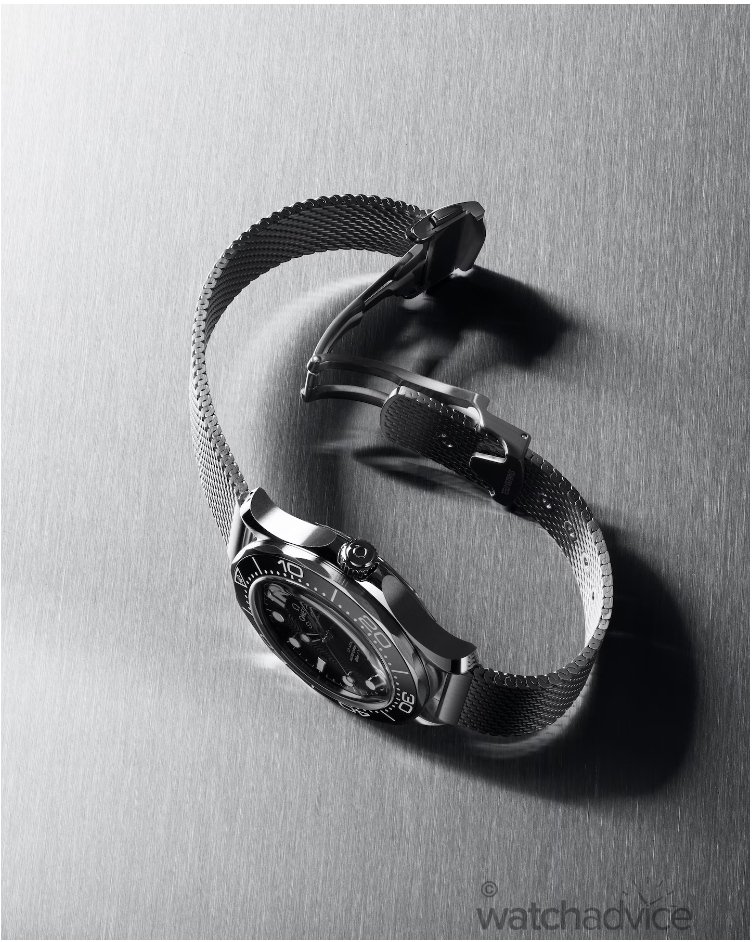
For many, having a date is non-negotiable. If pulling out your phone simply won’t do, you’ve already made up your mind. For those who are allergic to dates on watches but still crave a ceramic bezel, the perfectly colour-matched date window at 6 o’clock of the Brosnan wide-wave dial is as inoffensive as it gets, but I think the Daniel Craig dial will ultimately win you over. I know you, mate.
Much of the experience will come down to how these Seamasters look and feel on the wrist. Both share a 42mm case diameter, but despite being slightly thicker overall, the Daniel Craig’s domed crystal and matte bezel break up the visual mass, creating a smaller footprint. You could be tricked into thinking it’s a 41mm watch. The Brosnan’s uniform glossy look and flatter profile make it look and wear like a true 42mm. This difference in wrist presence is particularly obvious when comparing each model on their rubber straps.
The Brosnan diver’s ceramic dial has that flawless clarity—every wave and index pops sharply. My blue one shifts from navy to cyan at the beach. The classic bracelet is solid, low-profile, and heavy, but the micro-adjust ensures comfort. And while the Brosnan diver was an avant-garde look in the 1990s, success has turned it into a more conventional timepiece by today’s standards.
The Daniel Craig diver, by contrast, evokes something altogether different. Its aluminium dial has a softer, warmer presence; the tight-wave pattern, paired with the double-domed crystal, plays with light in a way that’s almost painterly. The Milanese bracelet elevates the whole experience—tactile, delicate, and yet thoroughly engineered (if you find it comfortable). The fully brushed steel mesh still gleams like a K-Pop Demon Hunter. It feels less like a dive instrument and more like a high concept dress watch—almost a stone-dial Piaget in spirit. It’s the one that turns heads when new and grows with you over time.
While I’d recommend buying on a steel bracelet first—especially if it’s your first big investment— you’re missing half the experience if you don’t try the rubber. To me, that’s where both versions really hit their stride.
Price and Value
On steel bracelets, the Brosnan sits at AU$10,525 versus AU$11,550 for the Daniel Craig.
On rubber straps, the split is similar: AU$9,925 for Brosnan and AU$10,950 for Craig.
Some of this difference comes down to hardware. On the rubber strap versions, a folding deployant clasp is inherently more expensive than a simple pin buckle. Add a pronounced dome to the sapphire crystal—as seen on the Daniel Craig diver—and the cost climbs further. Try replacing one at service, and you’ll quickly understand why.
The classic bracelet also seems more complex with its highly adjustable clasp. But because the links do not taper, production costs are slightly lower—not that cost is ever a motivation for OMEGA. The Milanese bracelet has its own intricacies: a complicated clasp system with ceramic locking pins and finely twisted strands of metal. There are cheap mesh bracelets, and then there are mesh bracelets… and this is absolutely in the latter category. Every strand feels precise and well engineered, no matter the alloy.
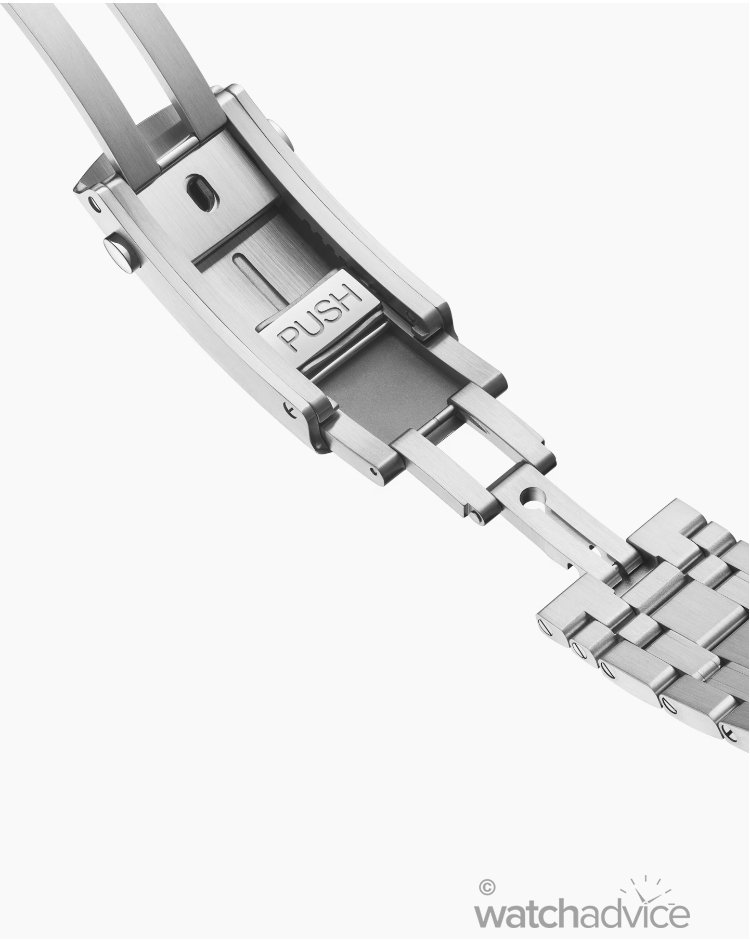
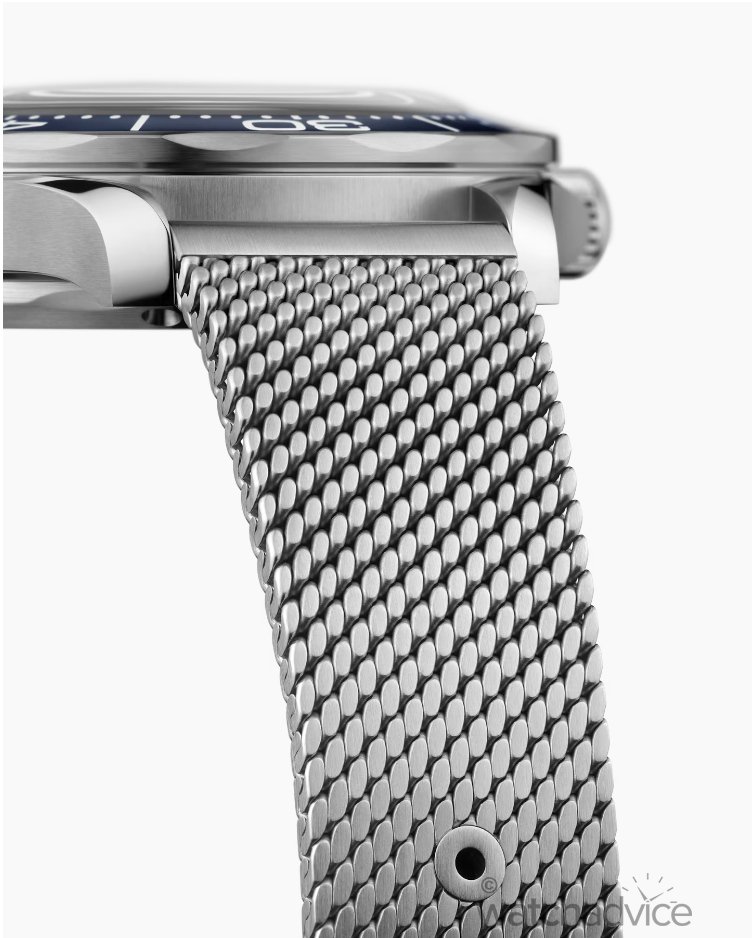
Then there’s the material question. Is aluminium more expensive than zirconium dioxide ceramic? On paper, maybe not. Full ceramic watch cases are marketed as a premium product and carry a high price tag, but an entire watch case body is a far more complex three-dimensional structure than a generally flat bezel insert or dial. Oxalic anodisation, as used on the new Daniel Craig aluminium bezels, is significantly more expensive than standard acid anodisation, and finishing it with Super LumiNova all around the bezel adds further cost. Arguably, you are getting the best of both worlds: fantastic longevity but still the ability to build a unique patina story of your own.
In short, the Daniel Craig diver is priced higher, but there’s a tangible justification: more complex crystal, upgraded rubber strap clasp, a meticulously finished Milanese bracelet, and a premium anodised aluminium bezel and dial. It’s not just about marketing—these are tangible costs built into a design that genuinely pushes the Diver 300m forward. And to be blunt, it simply looks more expensive in person.
Final Thoughts
That’s really the essence of these two Seamasters: they represent not just different eras of design, but entirely different outlooks. Each will do everything you want as your one (or 7th) luxury piece if you let it.
The Brosnan diver still carries that 1990s optimism: sleek, futuristic, proudly overbuilt, designed to do everything without compromise. There will be a fifth generation, and it will be better and probably a bit smaller too.
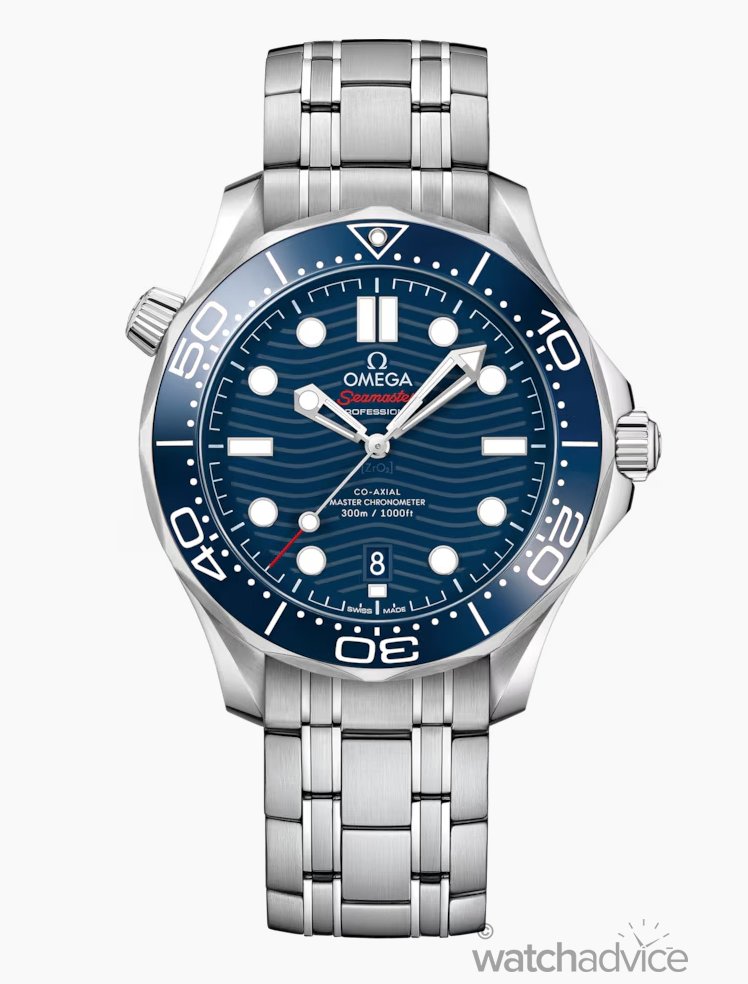
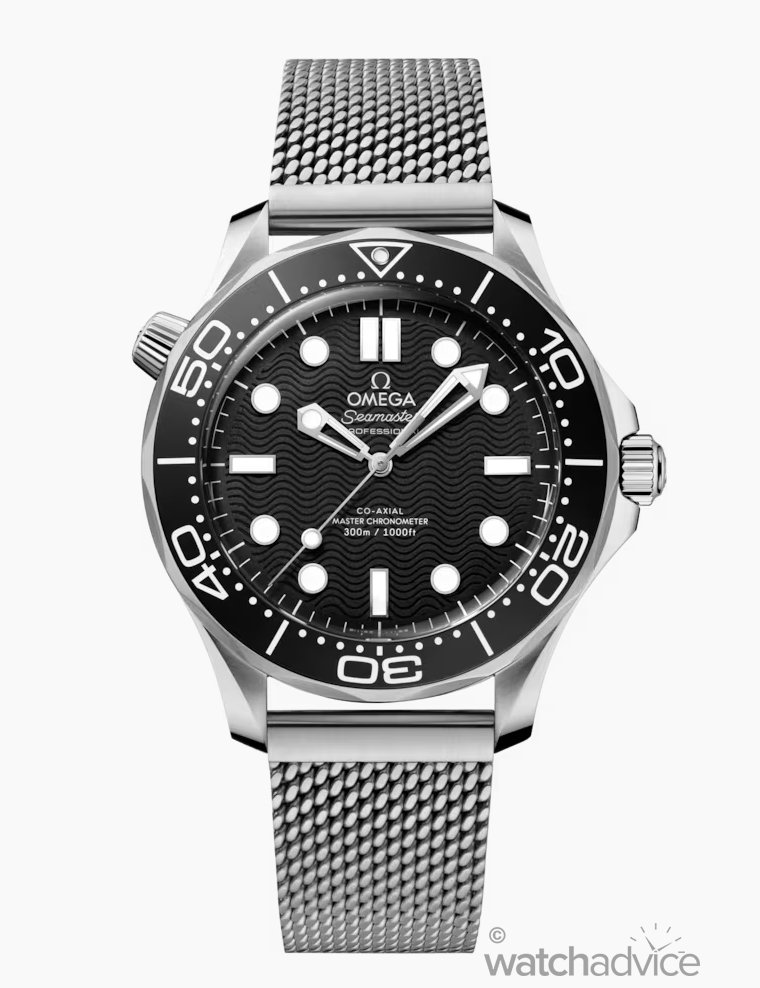
The Daniel Craig, by contrast, makes a quiet yet undeniable statement. It’s a watch that announces itself through refinement rather than force. It doesn’t scream for attention, but it turns heads in a way that feels deliberate, considered, and modern. Ceramic gives way to aluminium, gloss gives way to texture, and in that exchange, Omega trades bravado for boldness with subtlety.
As Pierce Brosnan himself once said of his own Seamaster: “I love watches, always have. I love that particular watch. It was and remains a fabulous timepiece. Strong, elegant, bold, and it tells good time.” — Esquire, GoldenEye watch-along (2020) Three decades on, that sentiment still defines the Seamaster. The faces have changed, the mission has evolved, but the heartbeat remains the same.



